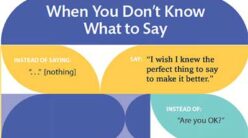For some of us, it’s procrastination. For others, it’s overeating. And for still others, it’s perpetually showing up late, or nail biting, or gossiping.
Whatever it is, we’ve all felt the pull of a bad habit (or several!) that we know we ought to kick but just . . . can’t. But don’t despair: habit transformation really is possible. Here’s your guide to overcoming once and for all.
The value of habits
Under most circumstances, the habit system is quite valuable, because it helps us do the ordinary, routine things of daily life without having to think about them. Take your morning routine: “You get up in the morning and you get yourself washed and dressed and ready for your day,” says Art Markman, Ph.D., professor of psychology at the University of Texas and author of Smart Change: Five Tools to Create New and Sustainable Habits in Yourself and Others. “You do that without having to think about the details of what you’re doing—you know where your toothbrush is, you know how to get the toothpaste on it. That’s really valuable, because you don’t want to have to expend all of your thinking resources on the routine elements of life.”
But while the habit system is generally a helpful aspect of life, it’s also susceptible to misuse. “It can get co-opted very, very easily by emotions,” says Judson Brewer, M.D., Ph.D., a professor at the University of Massachusetts Medical School. “Stress eating is the simplest example. It is so easy to link eating cupcakes with feeling good, because it releases dopamine in our brain.”
Unfortunately, once a habit is entrenched, willpower is often no match against it. That’s because the very nature of a habit is that it’s an automatic response—the body running on autopilot—whereas willpower depends on our conscious effort, which is highly susceptible to failure. The prefrontal cortex (the region of the brain responsible for self-control) stops functioning correctly under stress, for instance. Likewise, fatigue weakens our capacity for self-control: although we may start out with a lot of willpower in the morning, it can be depleted during the course of the day through overuse, says Brewer.
While willpower isn’t a reliable way to conquer a habit, it is possible to reprogram the habit system altogether, so that it actually pushes you toward the behaviors you want to do. Here’s how to work the transformation:
Know the when and where.
“One of the things that’s interesting about habits is you do them mindlessly,” says Markman. “This is why people can walk in the house from the garage and not be 100 percent sure whether they closed the garage door.” To successfully break a bad habit, then, you first have to become conscious of exactly when and where you’re likely to engage in it, so you know how to intervene.
Zero in on your “why.”
In addition to figuring out when and where you’re falling prey to your bad habit, it’s also useful to nail down the “why” behind your habit—that is, the reasons you’re drawn to that behavior, as well as the reasons why you want to quit.
According to James Claiborn, Ph.D., a psychologist in Maine and the author of The Habit Change Workbook, every bad habit (and every good one too, for that matter) has a payoff of some sort, or else we wouldn’t get started on it in the first place. Eating junk food, for instance, provides a feeling of satisfaction, relieves hunger, and functions as a stress reliever.
“It is reinforced, it pays off, it gives me something I want,” says Claiborn. “Just deciding that I don’t want to do it anymore isn’t going to stop that.”
Claiborn recommends being blunt with yourself about the appeal of your specific habit and actually writing down your “why”s on paper. “Really look at what you’ve got there, because if you ignore some of that—particularly the reasons why you don’t want to change—then you’re not likely to do well.”
Revamp your surroundings.
Once you’ve identified the times and places where you’re likely to succumb, rework your physical environment to support your new goals. “Make the desirable behaviors really easy to do and the undesirable behaviors really hard to do,” says Markman. Trying to swap TV binges for exercise? Lay out workout clothes ahead of time so they will be ready to go. Want to avoid procrastinating on finishing a project? Hole up in a distraction-free room.
If you can, put actual physical distance between yourself and your bad habit. To prevent junk food binges, for instance, take a cue from research at the Cornell Food and Brand Lab and keep munchies in a hard-to-reach spot: researchers found that secretaries in an office setting ate 48 percent more candy when it was kept on their desks than when it was stored six feet away. (Visibility matters too: the secretaries ate significantly more candy when the bowl was kept on top of the desk than when it was stored in a desk drawer.)
Swap the old for something new.
It’s extremely useful to develop a new, substitute habit that meets the same needs as the behavior you’re trying to kick, but without the associated problems. “At the end of the day, long-term changes in habits ultimately require setting up a different set of habits,” says Markman.
Ideally, your new habit should be one that actually prevents you from doing the behavior you’re trying to avoid. In Markman’s own case, for instance, his bad habit was nail biting, a behavior he typically engaged in while sitting at his desk. The substitute habit he decided on was playing with desk toys. “It’s really awkward to bite your nails when you’re playing with a Slinky,” he explains.
Change up your language.
When saying “no” to temptation, word choice matters. A study in the Journal of Consumer Research found that participants who said, “I don’t do ____,” were able to resist temptation significantly more effectively than those who said, “I can’t do ____.”
Why does the choice of language make a difference? The researchers theorize that when we say, “I don’t,” it implies a resolute, long-term personal attitude of resistance, thereby affirming our own capacity for self-control and increasing our sense of empowerment. By contrast, when we say, “I can’t,” the implication is that we’re only resisting because of an external control, which undermines our sense of empowerment and plays down our capacity for self-control.
Plan for temptation.
You will, of course, be tempted, and if you plan on figuring out how to handle that temptation in the moment, you’re destined for failure. Instead, develop a realistic, specific plan for what you’ll do in moments when the allure of old habits is strong.
For example, says Markman, if you’re trying to avoid overeating, buffets are dangerous. So when you know you’re going to encounter a buffet (at, say, a family function or a work meeting), your self-protection plan could be something like this: “I’ll swing by the dessert table first to pick up a small plate, then wait for everyone else to go through line ahead of me. When all the offerings have been picked over, I’ll fill my plate. Since I’ll have been at the end of the line, a lot of the food will be gone by the time I’ve finished my plate, and there won’t be an opportunity to overindulge.”
Although many temptations will be unavoidable, don’t intentionally put yourself in vulnerable situations (think alcoholics in bars). If you go into environments where you have engaged in the problem behavior before, where there are lots of environmental cues that this is the time and the place to do that old habit, you’re very likely to succumb, says Claiborn.
Record your habit.
It’s a little known secret, says Claiborn, that if you start tracking on paper the behaviors you want to avoid, you’ll automatically cut back on those behaviors. The effect comes about not because you consciously start trying to limit bad behavior, but more as an instinctive reaction.
For some kinds of habits, says Claiborn, it’s helpful also to chronicle your thinking process when you’re engaging in the habit. This is especially true for habits that involve giving yourself permission to do something (as in using the “one donut won’t hurt” logic to give yourself permission to indulge in a sweet treat). Writing down your rationale “makes those automatic kinds of thoughts a little bit more obvious and puts you in a position of having to say, ‘Wait a minute, what am I really saying to myself?’” says Claiborn.
Jamie Santa Cruz is a health and medical writer based in Centennial, Colorado.







